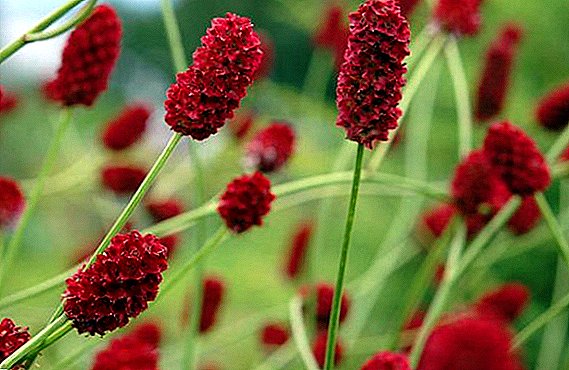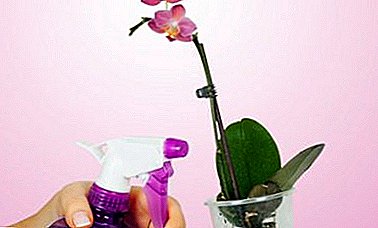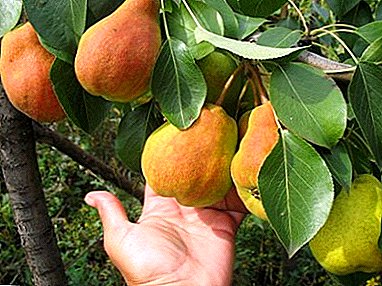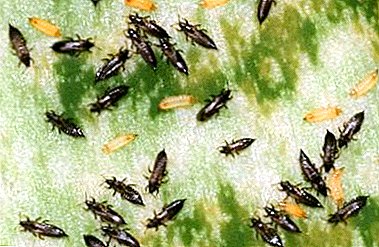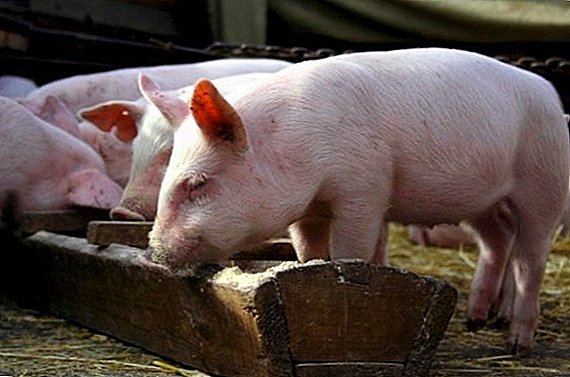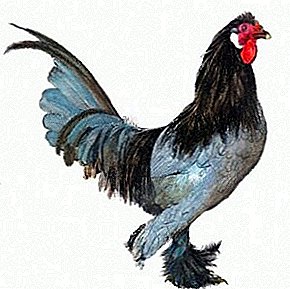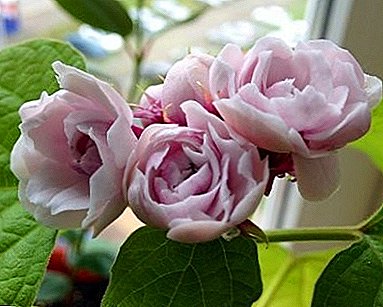
Klerodendrum Filippinsky - is the most beautiful representative of the flora.
The plant blooms year-round. It has a tasty-smelling pink-white flowers.
In height the flower reaches no more 2 meters. In growing unpretentious.
Description
 Clerodendrum Filipino - amazing in its beauty flower. In the wild it can be found in Asia.
Clerodendrum Filipino - amazing in its beauty flower. In the wild it can be found in Asia.
It mainly grows in the forests of China, Korea and Japan. Latin name: Clerodendrum philippinum. Belongs to the family Lamiaceae.
Sometimes this plant is called Volkameria fragrant. The representative of flora received such a name due to delicate fragrant flowers. They emit a beautiful alluring fragrance.
Pink and white flowers are collected in dense corymbose inflorescences. They are located on the top of the flower.
In size inflorescences reach no more than 18-22 cm in diameter. Corolla in the form of funnels. In the wild can be pyatilepestkovym.
In cultivated plants that grow at home, the corolla has terry kind of.
In height the bush reaches no more than 2 meters. It has straight, slightly lowered stems. Leaves with long petioles, located opposite. In size, large, reach more than 16 cm in length. The color is very bright, with a beautiful emerald hue.
Sheet plate wide, in the shape of a heart. It has a small jagged edge. The surface of the leaves is terry, tuberculate. Endowed with "crushed" veins.
Of the kind of Clerodendrum, the Philippine subspecies is the most unpretentious in growing. There are no important content requirements. It grows very quickly. All that a plant needs is compliance with certain rules.
Other types of Clerodendrum can also be found on our website: Cleerodendrum Wallich, Clerodendrum Ugandan, Clerodendrum Thompson.
A photo
You can visually get acquainted with Klerodendrum Filippinsky on the photo:





Home care
Read more about the care of Clerodendrum here.
Pruning
Due to the fact that the flowers of this plant are apical, the amount of fragrant flowering will depend on new stems. To increase bushiness, the stems must be cut to one-third of the available height.
The procedure is carried out annually in the spring before the start of active growth. Also, the plant must shorten the side shoots. If such pruning is not made, then the ornamental bush will need additional supports.
Watering
 Clerodendrum the Filipino likes abundant systematic watering. He needs soft water without chemical impurities.
Clerodendrum the Filipino likes abundant systematic watering. He needs soft water without chemical impurities.
Water should be at room temperature, it is best to let it settle. The plant is watered as the top of the earth dries.
If in winter the flower is in cold rooms or greenhouses, watering is reduced to a minimum.
Excessive watering during the cold period may result to root decay, as the water will not have time to soak and evaporate.
Important! In summer, hot weather and in winter, when Clerodendrum is located close to heating devices, it needs frequent systematic spraying. Spray the flower at least once a day. This is due to the fact that the ornamental bush negatively relates to hot arid air.
Landing
Fit for landing light breathable soil. The earth must pass moisture well and have a sufficient number of necessary trace elements. For the growth of plants are ideal substrates from turf and sheet soil.
Peat, humus, and fine-grained river sand are added to the soil. Capacities choose volumetric for excellent development of the root system. At the bottom of the pot do drainage of pebbles. It will protect the decorative bush from undesirable stagnation of water.
Transfer
The plant grows very quickly. Therefore, the ornamental shrub needs a correct annual transplant. According to the size of the container choose more than the previous. It is necessary to take into account that the roots of an ornamental bush fragile. Therefore, the earth com alarm is prohibited.
It is necessary to produce the method of transshipment. The plant is installed in a new container and fill up the ground. Then plentifully watered and put in a warm, windless room.
Attention! Once every 14 days, the plant must be fertilized. Integrated commercial fertilizers for house flowers are ideal.
Temperature
 Year-round this representative of the flora requires stable temperatures. Plant does not like strong drops. The best option for growing 19-24 ° C.
Year-round this representative of the flora requires stable temperatures. Plant does not like strong drops. The best option for growing 19-24 ° C.
If it is not possible to create artificial lighting in winter, it is recommended to lower the air temperature in the room.
This procedure will help the plant to preserve the beauty and decoration. Otherwise, the stems can be very stretched, and the appearance will lose aesthetics.
Lighting
This representative of the flora loves bright natural light. The optimal lighting option is 2900-4000 lux.
When growing on the south-west side, the flower will need shading other plants from strong sun.
When growing on the shaded north side, Clerodendrum lacks abundant sunshine for stable growth and flowering.
In winter, the flower requires systematic lighting from 8-9 hours a day. With this care, the plant will actively develop and grow well.
Breeding
Cuttings
The simplest way to propagate a plant is cutting. It is carried out in the spring, when nature begins to wake up. From the main mother bush one third cut off the top of the stem. Escape must have 3-4 internodes.
Planting material must be rooted in a water tank. Rooting in the substrate is also allowed. Perlite and peat are added to the soil. The stems in the tank are grown in mini-greenhouses. Seedlings need a constant temperature above 20 ° C. Also, the stems periodically air to avoid rotting.
After a good rooting flower transplanted into a large container. Since pruning is necessary for abundant blooming, pruning can be combined with this procedure. Thus, the branches of the plant will not disappear, and a new ornamental shrub may grow from them.
Seeds
 Seeds are sown February-March. A substrate of turf soil, fine-grained river sand and peat is required.
Seeds are sown February-March. A substrate of turf soil, fine-grained river sand and peat is required.
Seeds are placed in mini greenhouses. They can be made from glass jars, cellophane or a plastic bottle.
Contain future seedlings with stable lighting. Periodically, the air is ventilated.
It is also necessary to maintain sufficient soil moisture. The first shoots appear 45-60 days after sowing.
After the seedlings have 4-5 leaves, they are transplanted into small cups.
Importantso that one seed is in the same container. If there are more than two seeds in a small pot, then they will have no place to actively develop and grow.
Tanks should be no more than 6 cm in diameter. After the seedlings are developed and rooted, the seedlings must be transplanted into large containers. Then they begin to gradually accustom to indoor conditions for adult ornamental shrubs.
Diseases and pests
Diseases of this representative flora practically not exposed. The main reasons for poor growth can be associated with failure to follow simple rules.
If the plant ceases to bloom, then this may be due to improper wintering. In order for the pet to bloom in spring, it needs a cool wintering. After the end of flowering in winter, watering is gradually reduced. Then the flower is transferred to a cool room.
In such a room, the temperature should be no higher than 15 ° C. The ideal conditions for growth in winter is 12 ° C. The flower must be watered infrequently and moderately - so that the plant does not wither. In such conditions, after 1.5-2 months, this representative of the flora is resting and gaining strength for the next season.
After the appearance of new stems, watering begins to increase. Then produce trimming the apical part, transplanted into a new container. After that, the flower returns the usual habitat with a temperature of 19-24 ° C. Resume feeding, and put in a well-lit place.
 In the spring, the representative of the flora awakens and begins to go into active growth. The flower has new buds. If this does not happen, then the reason may be poor lighting.
In the spring, the representative of the flora awakens and begins to go into active growth. The flower has new buds. If this does not happen, then the reason may be poor lighting.
Very often Clerodendrum Filipino may not bloom due to the fact that it has not been transplanted for a very long time. Therefore, the flower requires nutrient fortified soil.
Ornamental shrub may be affected spider mites and flail. At the first symptoms of a lesion, the branches and leaves are rubbed with soapy water.
Then the flower is washed under a hot stream of water. The optimum water temperature should be 45 ° C. If these procedures do not help, then the leaves and flower stems are treated with chemical insecticidal agents.
Conclusion
This magnificent representative of the flora loves abundant frequent watering, additional feeding and good lighting. In winter, the plant must be dosvechivat.
This representative of the flora may be affected by spider mites and scutes. Requires annual transplant in the spring. In hot weather, he needs frequent systematic spraying.



